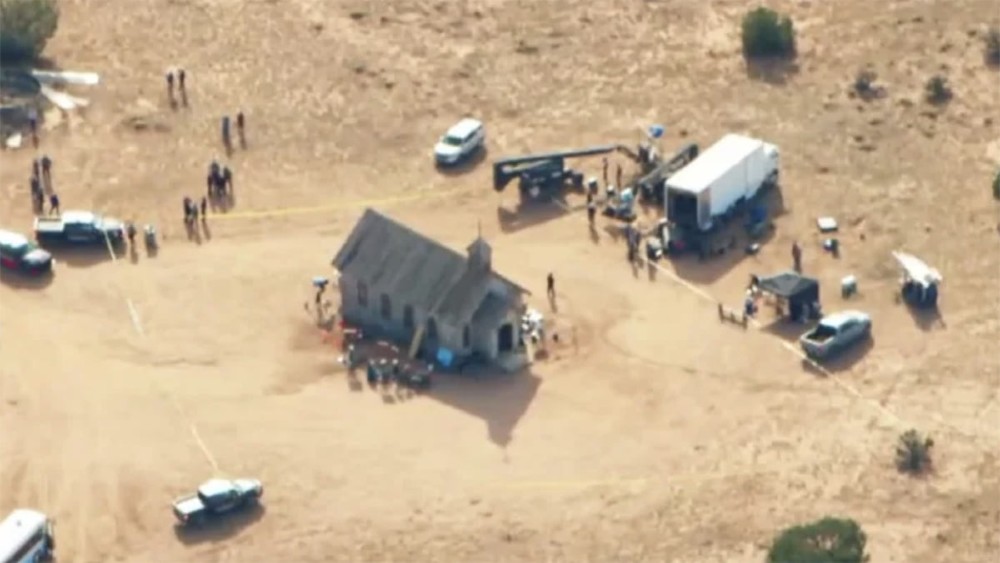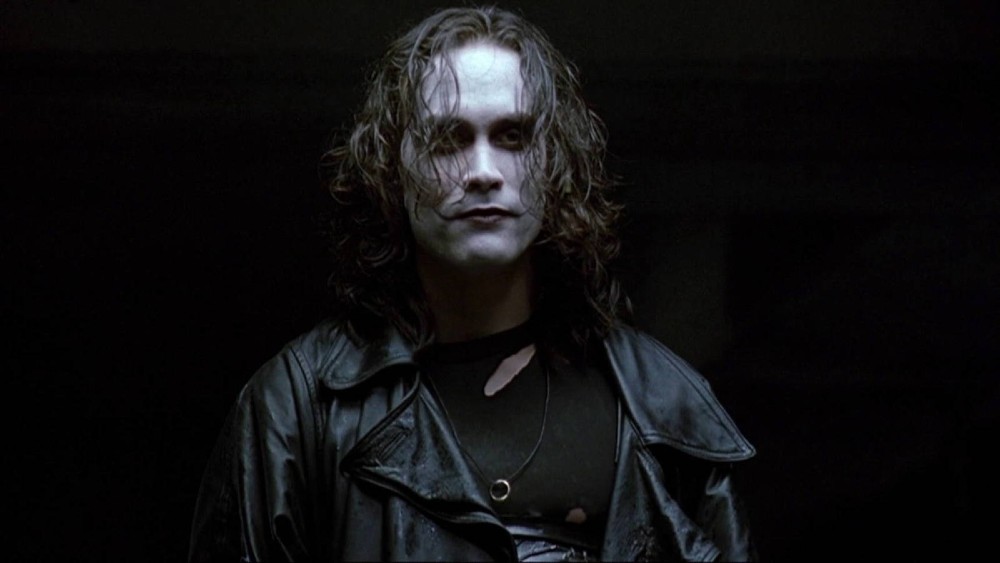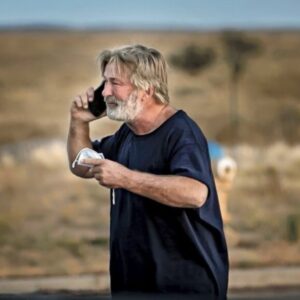
Now that we’re a couple weeks out from the tragedy that killed Cinematographer Halyna Hutchins and wounded Director Joseph Souza, I’ve seen plenty of hot takes and opinion pieces about what happened and how it could have happened and what it foretells about this or that or the other thing. I’ve been paying close attention, not just because it’s an important story for our industry that so easily could have been avoided, but also because I’m an indie filmmaker and what occurs on one indie film set ends up affecting what occurs on other indie film sets.
There has been much hand-wringing and pulling of hair and gnashing of teeth about the shooting and questions about the tragedy, but if we’re being brutally honest here, we have to sort of wonder why it hasn’t happened many, many times before. Because I’ve been on enough sets — sometimes as a director, sometimes as a visitor, sometimes as something else entirely — to know that low-budget films mean there are corners being cut everywhere. I also know that, while safety is often intended, it’s not always the top priority of everyone involved. Even accidentally. Allow me to offer a first-hand anecdote.
I was directing a live comedy show about 15 years ago and, as we began rehearsals, we had to shoot some video to go along with one of the stage performance pieces. This was a funny bit involving two women who show up to a double date wearing the same dress. A fight ensues. The comedy came from the outlandishness of the fight itself, so we wanted to get inventive with the angles and the fight moves. The actresses were game, we had a guy with some stunt work on his résumé helping them through it, and I was figuring out how to shoot it.
One idea was to have the camera operator lying on the floor and have one of the actresses dive over him, so it looked like she was flying through the frame. He was going to shoot it in slow motion and everything. We set up some pillows for her to dive onto, and I’m thinking it’s all good, it’s gonna look great, and let’s shoot this sucker.
The actress who was going to do the dive was skittish, but was afraid to speak up. She was intimidated. I didn’t mean to push her or make her feel uncomfortable, but my enthusiasm did that naturally. It wasn’t until one of the other actors, who happened to be a close friend of mine, stepped in and said, “Hang on. You’re not doing this right. Take a moment and figure this out,” that I did just that and realized what we were about to do. The pillows strewn about were not nearly enough of a safe landing pad, and if we’d shot it, there was a solid chance the actress could have suffered some kind of minor injury. Or even a major one, if she landed wrong.
Once I was snapped out of my desire to just shoot the damn thing and move on, I realized my mistake, we scrapped the shot and reimagined it, this time in a completely safe and thoughtful manner. I hadn’t intentionally put my actress in danger, but my tunnel vision about getting a fun shot did that for me.
Now, no one was going to die if it had gone wrong, but that’s not remotely the point. The point is that sometimes, on a low budget or no budget set, things happen quickly and not everyone has their eyes fully on the number one principle: safety first. I told the story because I want to make it clear that I’m not Monday Morning Quarterbacking here. I once screwed up, and was stopped from an even bigger mistake because someone else was paying closer attention than I was. This, even though it was my job to take care of everyone on the set. I was the director. The set was mine. Thus, it was my responsibility, one I unfortunately shirked.

So the fact that Hutchins’ death is the first of its kind since Brandon Lee was shot with improperly-made dummy rounds on the set of The Crow on March 31, 1993, is sort of stunning to me, because there are a lot of filmmakers out there who have a much lower standard for safety than I do, and they’re filming much more dangerous stuff than I did. For a perfect, tragic example, see Sarah Jones’ 2014 death on the set of Midnight Rider, and the resulting conviction of director Randall Miller for involuntary manslaughter.
Lee’s death was not the first time such a gun-related tragedy happened on a set — actor Jon-Erik Hexum accidentally killed himself on the set of the TV show Cover Up when he jokingly put a gun loaded with blanks to his head and pulled the trigger, unaware that the discharge of a blank at close range was potentially deadly — but you may be aware that it hasn’t happened on a TV or studio film set since.
There’s a reason for that. When Hexum died, people were made aware of the danger of blanks. When Lee was killed, people were made aware that dummy bullets, when not made exactly right, were as deadly as real ones. Now, the notion of guns that can shoot live rounds of any kind will be undoubtedly taken off sets, replaced by those that can either only shoot blanks, or ones that don’t shoot anything at all and which will be made to appear to fire using special effects.
That, it shouldn’t be too hard to imagine, will be too costly for most indies to manage, but this is also sort of beside the point, because I’m not here to talk about the pros and cons of using guns on movie and TV sets. Just like anything else, filmmakers will figure this out with whatever the new limitations are, and it will work out just fine.

My point here is much more specific. When I first heard that Hutchins had been killed, I told several friends in the industry that the armorer was going to be in really deep trouble, as would the First AD, because the former was in charge of the gun and whether it was loaded, and the latter was in charge of double-checking it before it was placed in Alec Baldwin’s hand. If an actor is handed a weapon and told it’s “cold,” that it doesn’t have live ammo in it, then it’s fair for that actor to assume this is the truth. Two other crew members, after all, should have confirmed this, and even so, no actor is required to know the difference between live rounds and blank ones. I certainly wouldn’t. That neither the armorer nor the AD did this, that this happened at all, basically just means that the one thing that scares the holy hell out of most indie filmmakers who work with some kind of dangerous weaponry — whether they wanted to admit it or not — has now finally happened. The fact that many reports have emerged of an unsafe working environment only reaffirms its inevitability.
But there is an upside to this.
Of course Hutchins’ death could have and should have been avoided, but with her death can come, as it did after Jones was killed, a renewed sense of purpose on film sets large and small. Cutting corners, something that all kinds of films do to save money and time, can still happen, but without putting lives in danger. Filmmakers can approach projects knowing that this kind of thing is possible, and cannot happen on their watch. Sets can be safe, and people can come to work knowing that they won’t be taking their lives in their hands just by showing up.
It’s horrifying that it had to happen this way, but I sort of think it was the only way it was going to. That’s one of the biggest crimes of all.
 Neil Turitz is a journalist, essayist, author, and filmmaker who has worked in and written about Hollywood for nearly 25 years, though he has never lived there. These days, he splits his time between New York City and the Berkshires. He’s not on Twitter, but you can find him on Instagram @6wordreviews.
Neil Turitz is a journalist, essayist, author, and filmmaker who has worked in and written about Hollywood for nearly 25 years, though he has never lived there. These days, he splits his time between New York City and the Berkshires. He’s not on Twitter, but you can find him on Instagram @6wordreviews.
You can read a new installation of The Accidental Turitz every Wednesday, and all previous columns can be found here.





